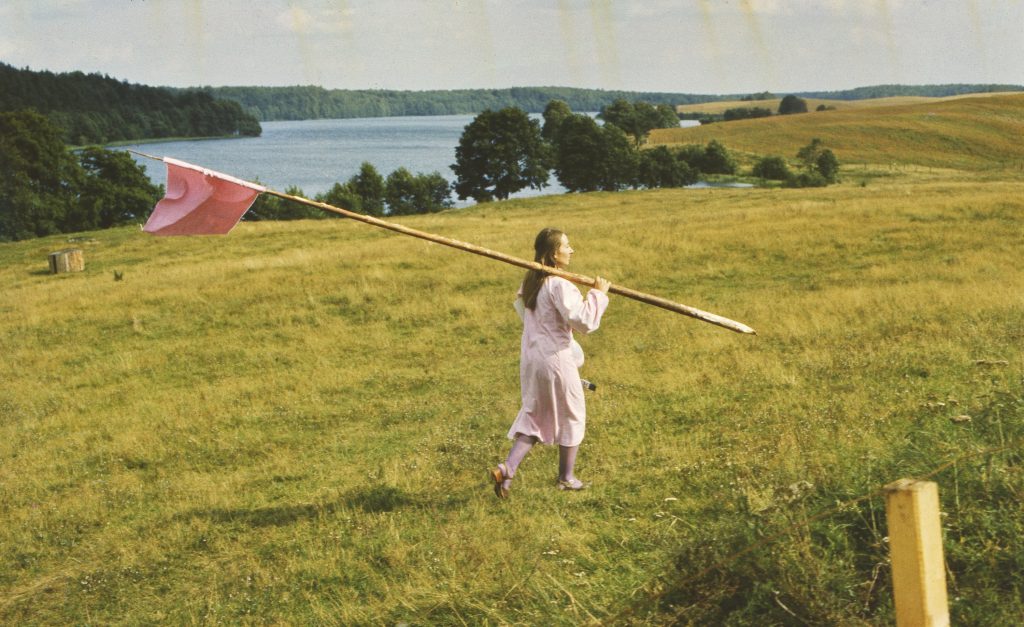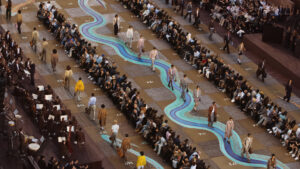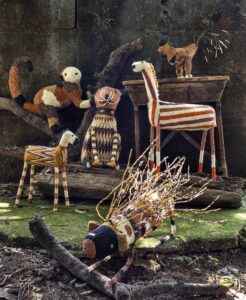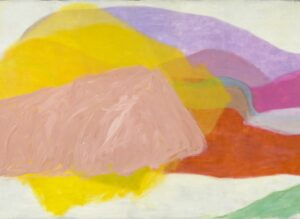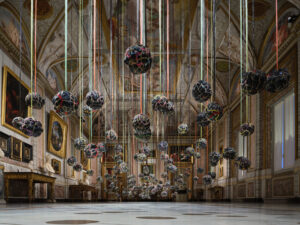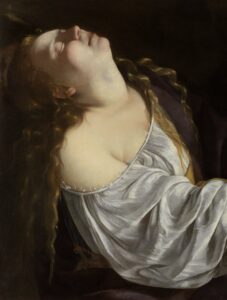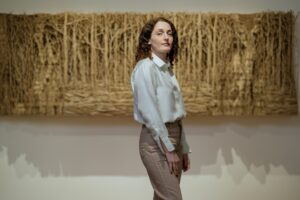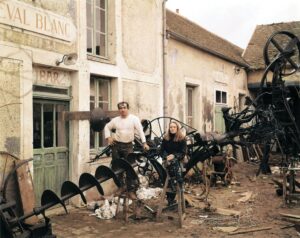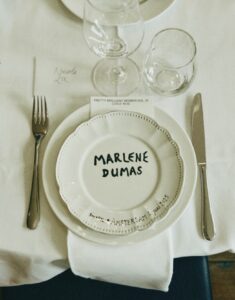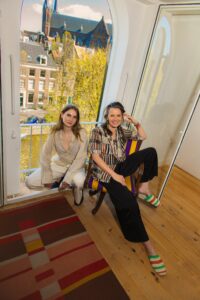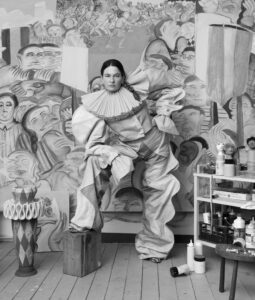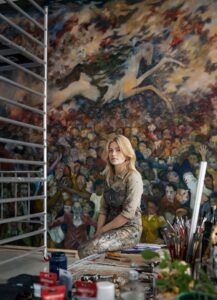Lea Lublin
Pretty Brilliant Women in the Arts
For generations, the story of art has been told through a singular lens. When the first editions of canonical books like Janson’s History of Art and Gombrich’s The Story of Art were published, they featured zero women artists. The Pretty Brilliant: Women in the Arts series aims to make whole what has long been a one-sided story. In these issues, featuring 583 artists, we celebrate women who have always been creating, innovating, and inspiring, like Lea Lublin.
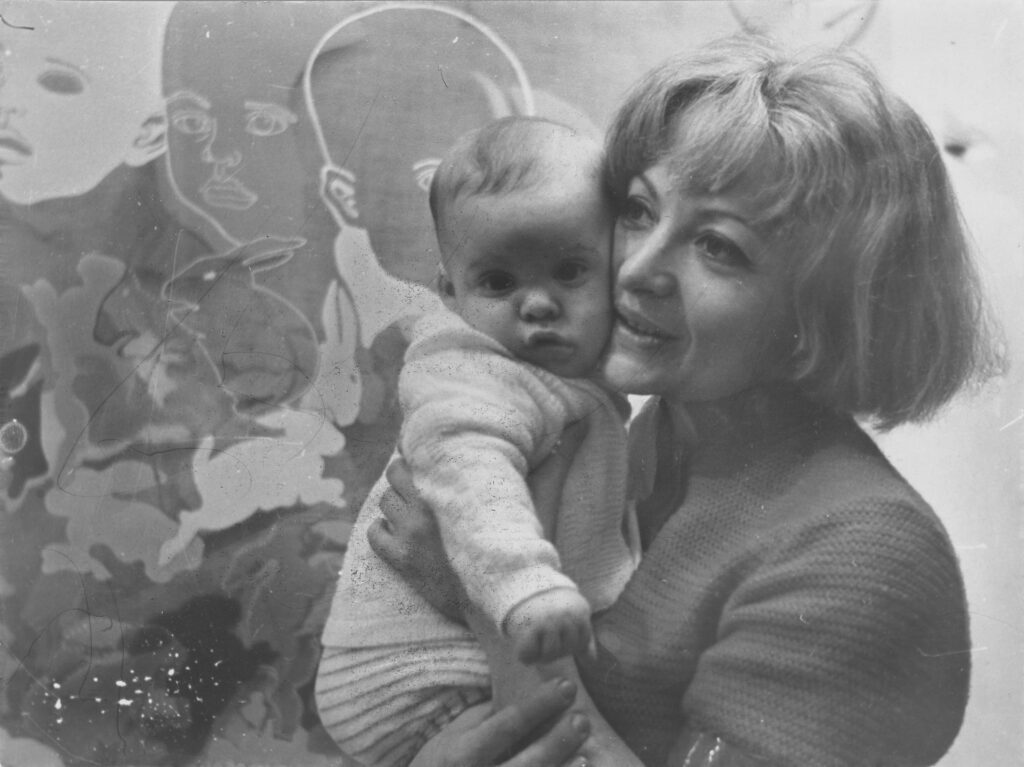
In 1965, when Lea Lublin left Argentina for Paris, she put an end to her career as a painter. With her new Voir Clair series – an assemblage of repainted reproductions fitted with windscreen wipers – she invited the public to break free from conditioned responses to mythical and heroic figures.
In one of her first performances in 1968, called Mon fils (My son), Lublin exhibited together with her son. As she once explained: ‘In May 1968, when everyone was in the street demanding a new freedom, I decided to produce a work that confronted reality and its representation by exhibiting an event which had irreversibly changed my life: the birth of my son. Was it the birth itself that made me focus on experience? Or was it a newfound awareness of myself as a woman? Or was it the events in France in May 1968 and their demand that life change? Experience is the convergence of diverse elements, of the individual and the social context, of history and History.’
Women’s place in history and society became an important theme in her work. In her 1978 performance Dissolution dans l’eau, Lublin threw a large banner into the Seine, inscribed with various prejudices about women.
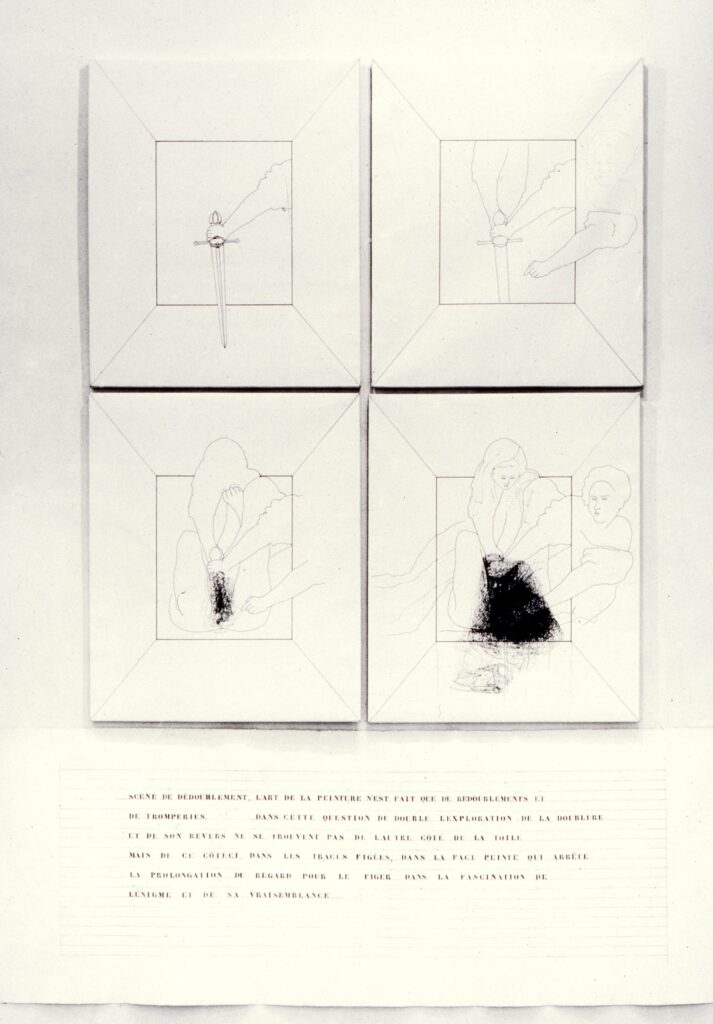
A year later, she exhibited Le Milieu du tableau, a series of drawings and texts on canvas centred around the figure of Artemisia Gentileschi. It marked a turning point in her career as she increasingly focused on uncovering the ‘non-seen’ within images – their psychological depth, and what she described as diachronic repressions. Her investigations into the ‘non-said’ and ‘surface’ readings of historical paintings reflect a deeply analytical approach. Using tools like video and photography, she sought to reveal hidden meanings – at times invoking the language of modernism with its striking primary colours.
Lea Lublin is featured in See All This #38: Pretty Brilliant Women in the Arts Vol. III. Order a copy here.
